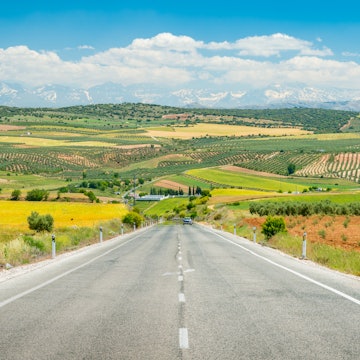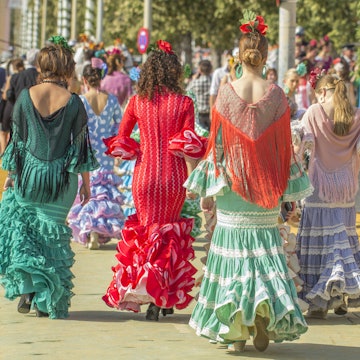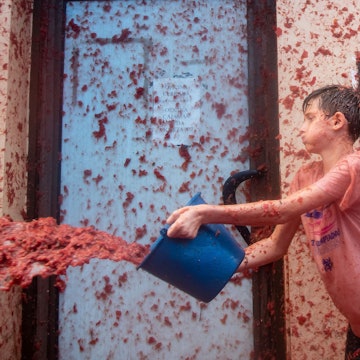

Madrid is a year-round destination. Sandra Moraes/Shutterstock
In days gone by, residents and visitors alike complained of Madrid's “nine months of winter and three of hell.” Spain's capital city occupies an elevated position, perched 657m (2155ft) above sea level, so while the weather is invariably sunny, winter temperatures are not much warmer than those in northern Europe. Even on crystal-bright December days, you’ll want a bulky coat to protect against the winds whipping off the snowy Guadarrama mountains.
Fiery summers are surely still a factor, but these days you can often walk around the city's neighborhoods in short sleeves during the spring and autumn. And in August, although the city dwellers flee to the mountains or beaches, all the major attractions remain open, so if you can take the heat and don’t mind that half of the shops, restaurants and bars are closed, it can be blissfully quiet.
In fact, apart from a slight lull in late autumn, there’s no real downturn in the steady stream of tourists coming to Madrid – the city’s world-class art galleries and museums never fail to deliver no matter what the weather is.
Time your visit with this guide to Madrid's seasons, festivals and special events.
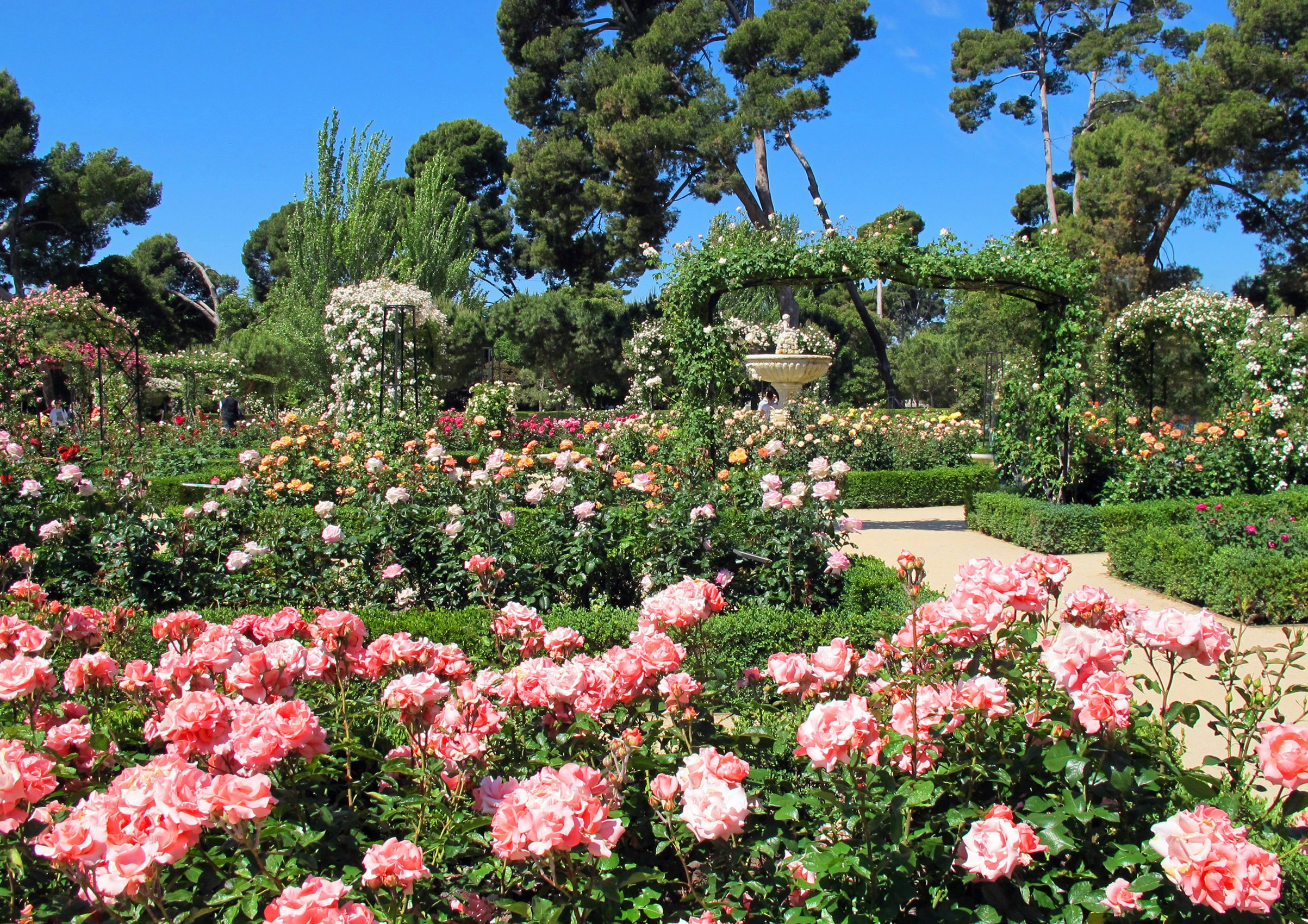
February through May is the best time for blooms and walking temperatures
Spring is the very best time to visit Madrid. Its onset is heralded by the blooming of pink almond blossoms from February to early March, and visitors who don’t mind the nip in the air can enjoy these in Parque del Buen Retiro’s almond orchard or the garden at Quinto de los Molinos. The flush of pink petals spreading over once bare branches sets off a kaleidoscopic display that culminates in April and May as hibiscus, gardenias and roses open their petals to the sunlight.
In mid-May, red carnations bloom in topknots and waistcoat pockets as the Fiestas de San Isidro go into full swing. During the festival, chulapas in polka-dot dresses dance with chulapos in checkered caps and waistcoats. Marking the city’s patron saint’s day, the fiestas are held on the weekend closest to May 15, with live music and dance performances on stages across Madrid. If you enjoy a party, aim for this weekend. However, if you’d prefer to visit the historic Plaza Mayor when it’s not heaving, pick another date.

June, July and December are the busiest months - for festivals and celebrations
Madrid has a packed social calendar so it’s a good idea to check what’s going on in advance if you prefer to avoid crowds. Besides Real Madrid matches at Estadio Santiago Bernabéu and big events at IFEMA, the city is especially buzzing for the Madrid Open tennis tournament, Fiestas de San Isidro and the Mad Cool music festival.
Europe’s largest Pride festival is also a big draw. Madrid Orgullo is in late June or early July on the weekend following International Pride Day. It’s a fantastic event that is a testament to the huge strides made for LGBTIQ+ rights since the death of Franco in 1975. However, it’s also a victim of its own success, with businesses falling over themselves to cash in. Book well in advance if you plan to attend.
High season in Madrid is June to July, and you’ll pay handsomely for a room during these months. Since the temperature steadily climbs at this time as well, go as early as possible.
December is also a very busy time, though it’s worth going to enjoy the Christmas markets and lights. These are best seen from the open-top Naviluz bus. Other reasons to visit include the elaborate nativity scenes and outdoor skating rinks.

July and August are scorching but relatively crowd-free
In July and August, temperatures can nudge 40°C (104°F). While it is a dry heat, it can be overwhelming if you’re not used to it, so make sure you book a room with air-conditioning. There is some respite in the mornings – mountain breezes tend to cool the city overnight. If you visit at this time of year, do all your exploring as early as possible and beat a hasty retreat before 2pm. In the afternoon, if you can bear a short walk through oven-hot streets, head to air-conditioned museums or cool off at one of the outdoor municipal pools.
The quietest month in summer is August, when many businesses shut ‒ though do be warned that construction work often kicks up a gear. Despite these drawbacks, there are a few festivals to enjoy. The best is the Virgen de la Paloma on August 15 in the historic area of La Latina. In the Plaza de la Paja and Jardines de las Vistillas, you can see chulapas and chulapos dance the traditional chotis as well as listen to performances of zarzuela music, a Spanish art form that is similar to opera.
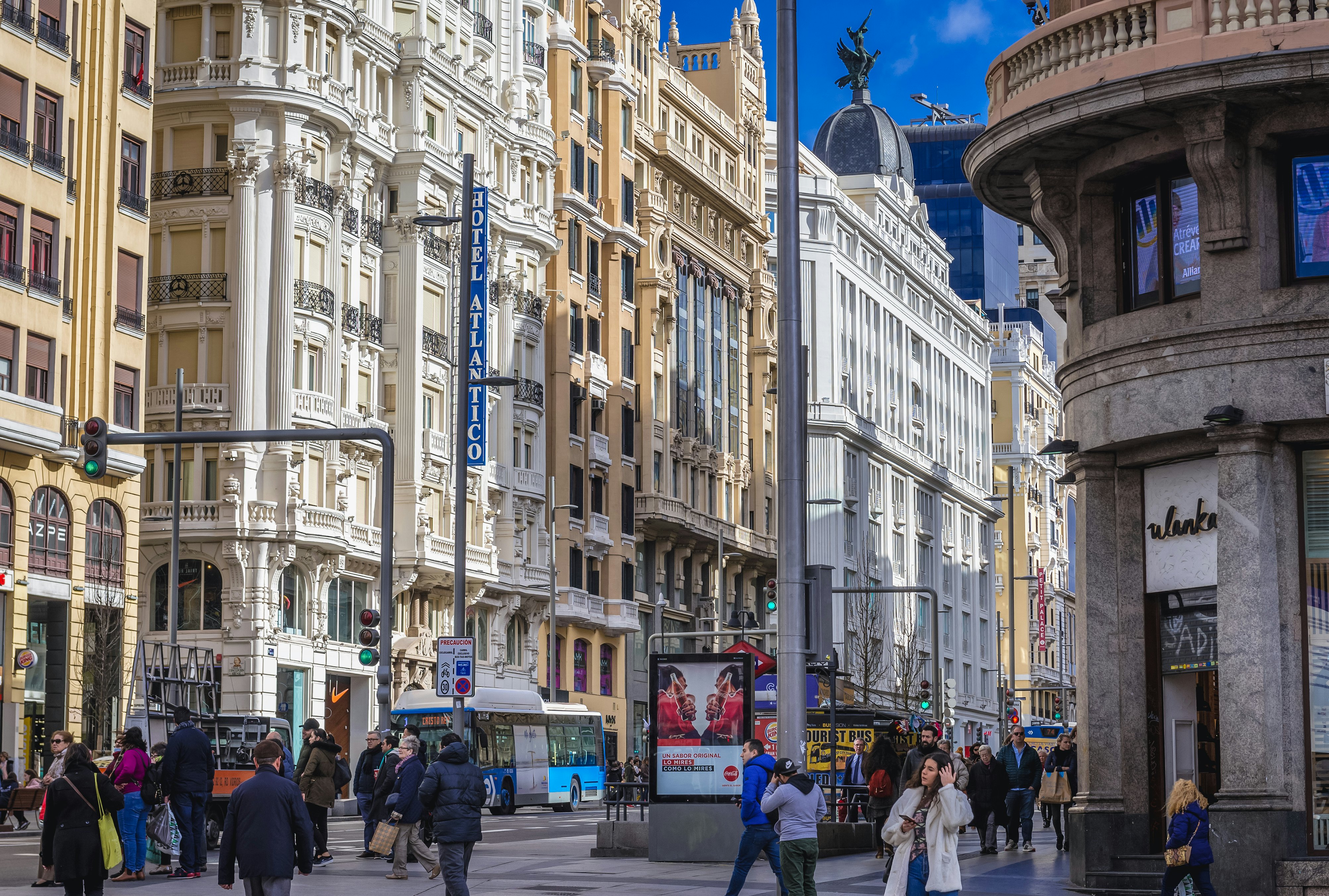
November through February is chilly and great for budget travelers
Apart from Christmas, Madrid is cheapest in winter, from November to February. These are the coldest months too, so wear a warm coat outdoors and cozy up to a bar when the chill cuts through you. One surefire way to refuel: a warming bowl of the signature cocido a la madrileña, a stew made from chickpeas, blood sausage, chorizo and veggies. On the plus side, winters tend to be dry and sunny. If you’re coming during the milder autumn months of October and November, however, it can be rainy.
If you visit straight after New Year's, the city is at its quietest, as madrileños recuperate from seasonal excesses. Another bonus is that it’s sometimes possible to go skiing or snowboarding in the nearby Sierra de Guadarrama. Later on, you might catch the very first flush of spring in February, when the almond blossoms begin to light up the city streets with pretty pink petals.











